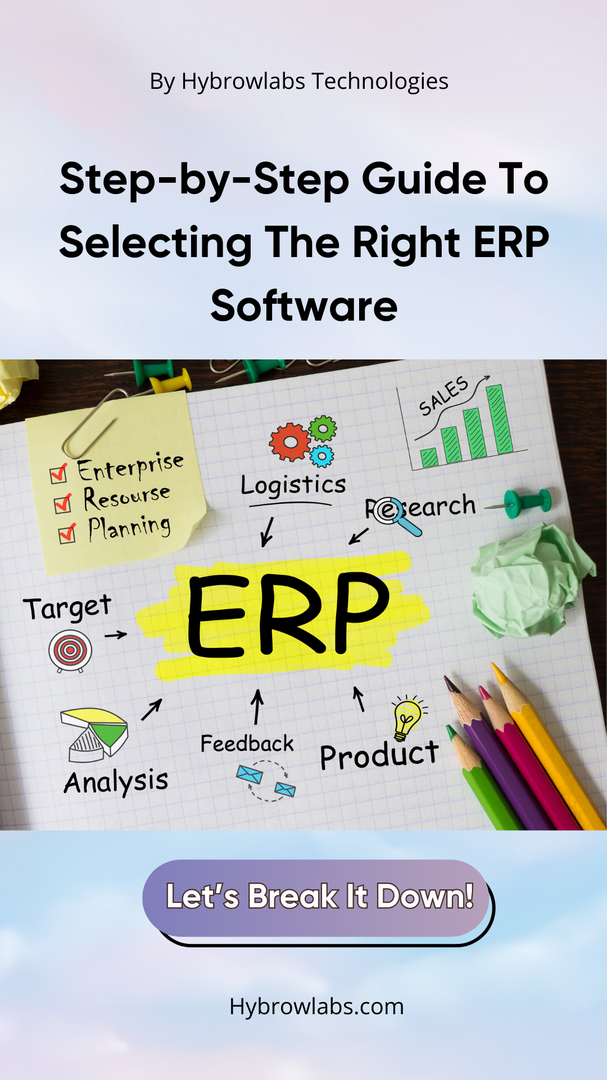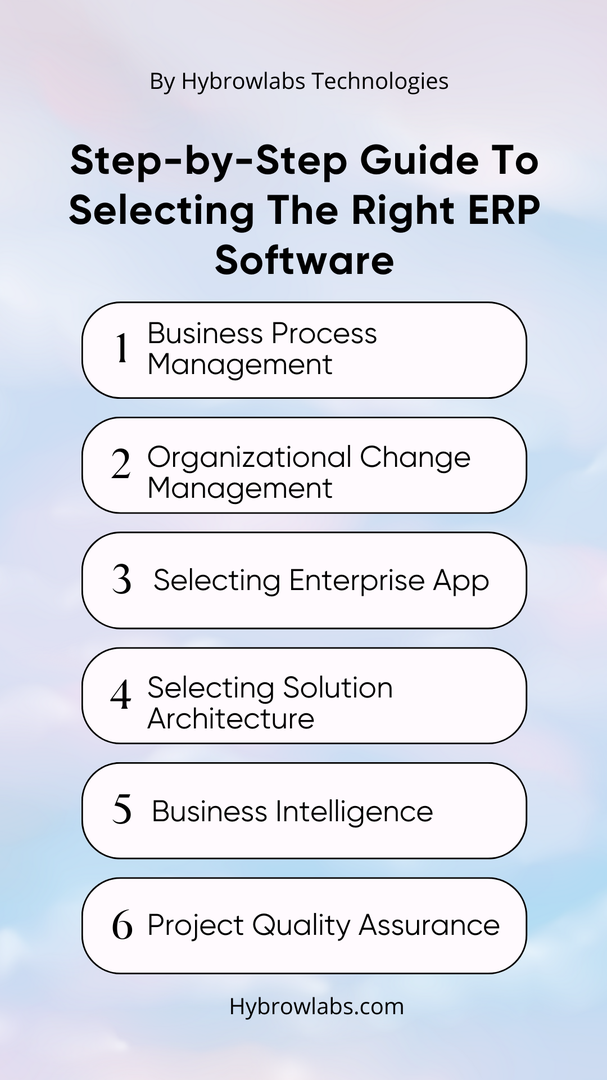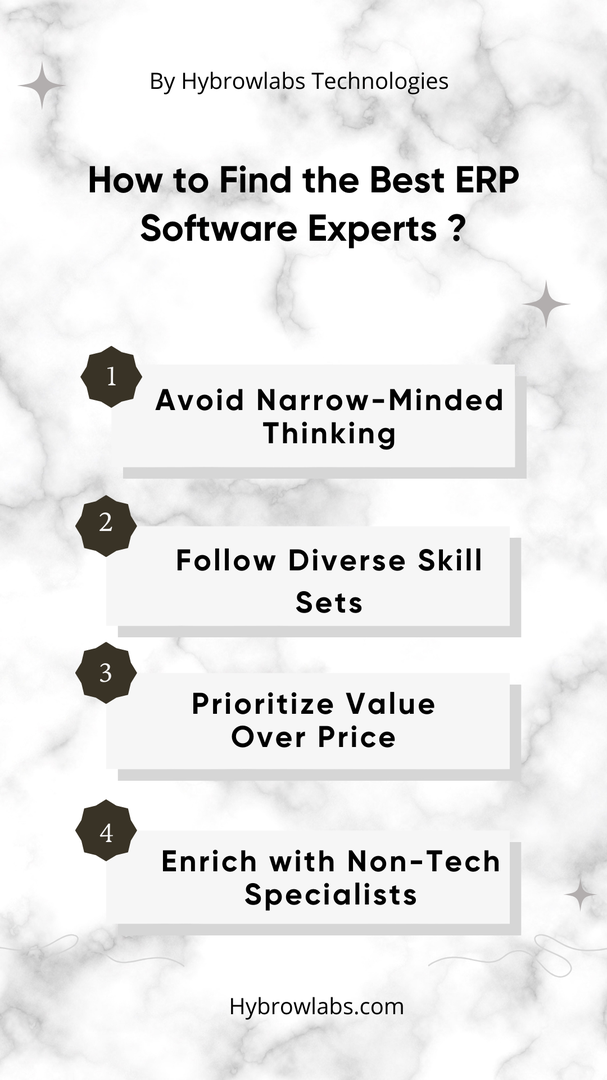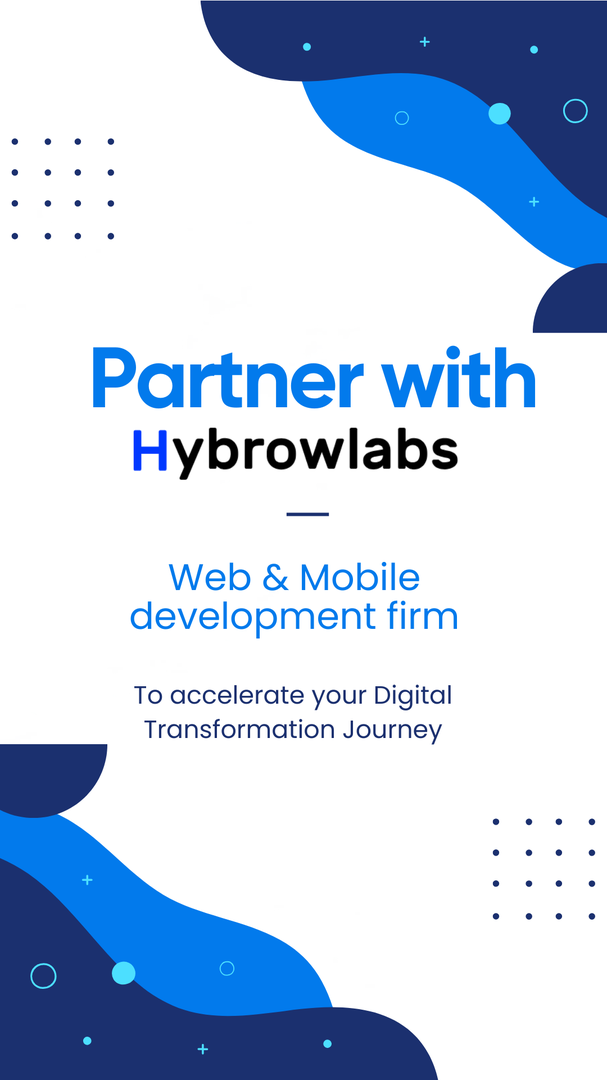In the relentless rhythm of the business world, orchestrating harmony from the chaos is a perpetual challenge. It's a symphony where every department plays its own tune, and the conductor must bring them together for a seamless performance. Picture this conductor as your Enterprise Resource Planning (ERP) system, a maestro of integration, efficiency, and transformative power. In this blog, we will discuss deeply the proven roadmap of selecting an ERP software. If you are someone who has been looking for a complete step-by-step guide or want to know more about the selection process you are at the right place. So without further delay let’s start!!!

Understanding ERP Software:
An Enterprise Resource Planning (ERP) system is a comprehensive and integrated software solution designed to manage and streamline various core business processes and functions within an organization. ERP systems are used to collect, store, manage, and interpret data from different business activities, facilitating efficient and coordinated operations. To know more deeply about ERP please read our previous blog- Simplifying Digital Transformations with ERP Software
Key characteristics of an ERP system include:

1. Integration:
ERP systems integrate data and processes from various departments (such as finance, HR, manufacturing, inventory, sales, and customer service) into a single, unified platform. This integration enables real-time data sharing and consistency across the organization.
2. Centralized Database:
ERP systems use a centralized database to store data. This means that different departments access the same source of information, ensuring data accuracy and reducing redundancy.
3. Streamlined Processes:
ERP software automates and streamlines business processes, reducing manual tasks and errors. This improves efficiency and allows employees to focus on more strategic tasks.
4. Data Analytics:
ERP systems often include analytics and reporting tools that help organizations make data-driven decisions. These tools provide insights into key performance indicators, financial data, and other aspects of the business.
5. Customization:
ERP solutions can be tailored to meet the specific needs of an organization. Customization allows businesses to adapt the software to their unique workflows & requirements.
Step-by-Step Guide To Selecting The Right ERP Software:

I. Business Process Management
A. Current Stage Business Process and Management
- Start by conducting a thorough assessment of your existing business processes and management practices. Engage with employees at all levels to gain insight into current workflows, pain points, and inefficiencies.
- Consider utilizing process mapping and workflow diagrams to visualize and document your current processes. Identify bottlenecks, manual tasks, and areas where data is siloed.
- This step allows you to establish a clear baseline of where your organization stands and what areas need improvement.
B. Future Stage Business Process and Management
- Define the future state you want to achieve with the help of an ERP system. Consider industry best practices, automation opportunities, and scalability.
- Involve key stakeholders in shaping this vision. Discuss how streamlined processes will impact their day-to-day tasks and contribute to the overall goals of the organization.
- Ensure that your future state aligns with your company's long-term strategic objectives.
C. Business Process Improvement
- Based on your assessment of current processes and the future state, identify specific areas for improvement.
- Develop a plan for process optimization. This might involve eliminating redundant steps, automating manual tasks, and ensuring data flow seamlessly across departments.
- Collaborate with relevant teams to prioritize improvements, focusing on those that will have the most significant impact on efficiency and customer satisfaction.
II. Organizational Change Management
A. Organizational Assessment
- Assess the readiness of your organization to undergo the changes associated with ERP implementation. This involves understanding the culture, employee skillsets, and willingness to adapt to new technologies.
- Conduct surveys, interviews, and workshops to gauge the organization's readiness. Identify potential resistance and areas where additional training or communication is necessary.
B. Organizational Impact
- Analyze how ERP adoption will impact different parts of the organization. Consider the changes in processes, job roles, and organizational structure.
- Create a comprehensive impact analysis document that outlines the effects on each department or team. Use this document to address concerns and develop mitigation strategies.
C. Organizational Change Plan
- Develop a change management plan that outlines the steps for managing and communicating the changes to employees.
- Assign change champions or advocates within each department to facilitate communication and address concerns.
- Provide training and support to ensure that employees can effectively use the new ERP system.
- Regularly assess the progress of the change plan and make adjustments as needed.
III. Enterprise App
A. Software Industry Landscape
- Begin by researching the ERP software landscape. Identify major vendors, solutions, and industry trends.
- Attend trade shows, read industry reports, and consult with experts to stay updated on the latest developments in the ERP market.
- Create a list of potential ERP vendors that align with your industry and business needs.
B. Strategic Alternatives and Change Plan
- Consider various strategic alternatives for ERP adoption. This might include options like cloud-based vs. on-premises ERP, open-source vs. proprietary solutions, or phased vs. Big Bang implementation.
- Evaluate each alternative against your business process improvements, organizational readiness, and future state vision.
- Develop a strategic change plan that outlines which ERP adoption path you'll take and how it aligns with your goals.
C. Short-List Software Evaluation
- Use your strategic change plan to create a shortlist of ERP software solutions. This list should only include options that align with your strategic goals, business processes, and organizational readiness.
- Request detailed information from each vendor, including product features, support options, and pricing.
- Engage with vendor representatives and schedule demonstrations to assess how well their ERP solution fits your needs.
D. Technology Recommendation
- Based on your shortlist evaluation, make a technology recommendation. Choose the ERP solution that aligns most closely with your business and organizational needs.
- Ensure that the selected technology integrates seamlessly with your existing systems and has a strong track record of success in your industry.
E. Implementation Roadmap and Plan
- Develop a detailed roadmap for implementing the chosen ERP solution. This should include a timeline, key milestones, and responsibilities for each phase of the implementation.
- Ensure that the implementation plan is aligned with your business processes, organizational change management plan, and strategic goals.
IV. Solution Architecture
A. Assess Current Architecture
- Evaluate your existing technology and system architecture to understand how the ERP system will fit within your IT infrastructure.
- Identify any legacy systems that may need to be integrated with the new ERP solution and ensure compatibility.
- Conduct a risk assessment to identify potential architectural challenges.
B. Analyze Architectural Impact
- Determine how the integration of the ERP system will impact your organization's overall architecture. Consider factors like data flow, security, and scalability.
- Ensure that the recommended ERP architecture aligns with your existing systems and supports the desired business processes.
C. Recommended Architecture
- Recommend a comprehensive architecture that supports the chosen ERP solution. This recommendation should address integration, security, scalability, and performance considerations.
- Collaborate with IT and architecture experts to ensure that the proposed architecture is practical and sustainable.
V. Business Intelligence
A. Identify Analytics Requirements
- Determine the specific analytics and reporting requirements of your organization. Consider which data sources are relevant, and what insights are needed to support decision-making.
B. Define Analytics Future Stage Requirements
- Define the future-stage analytics requirements, considering the capabilities of the chosen ERP system and the data it provides.
- Consider self-service analytics tools, data visualization, and reporting options.
C. Analytics Roadmap
- Create a roadmap for implementing business intelligence using ERP data. Determine how analytics will be integrated into your business processes and decision-making.
- Identify key performance indicators (KPIs) and reporting frameworks that will help monitor progress toward your business goals.
VI. Project Quality Assurance
A. Implement a robust quality assurance process throughout the ERP project:
- Develop a quality assurance plan that includes testing, validation, and verification procedures.
- Regularly review project progress against milestones and adjust the plan as needed.
- Conduct user acceptance testing (UAT) to ensure that the ERP system meets business requirements.
- Continuously monitor and evaluate project performance and outcomes.
How to Find the Best ERP Software Experts for a Digital Transformation?

One critical component of this transformation is choosing the right ERP (Enterprise Resource Planning) software. However, selecting the ideal ERP software experts to guide your organization through this journey can be a daunting task. To ensure a successful transition, it's imperative to find experts who not only understand the technical aspects but can also align with your business goals. Here are some essential points to consider when searching for the best ERP software experts for your digital transformation.
1. Avoid Narrow-Minded Thinking:
In the internet era, it's easy to fall into an echo chamber where you only hear the voices that echo your opinions and views. When seeking ERP software experts, it's crucial to break out of this echo chamber. Don't rely solely on your internal team's insights or the advice of your immediate network. Instead, actively seek diverse perspectives. Attend industry conferences, join online forums, and engage with thought leaders to gain a broader understanding of the ERP landscape. This will help you identify a wider range of experts and gather different opinions and insights, ultimately leading to a more informed decision.
2. Follow Diverse Skill Sets:
ERP systems are multifaceted and require expertise in various areas such as finance, supply chain, human resources, and more. When looking for ERP software experts, seek individuals or teams with a broad range of expertise. Avoid narrowly specialized experts who may focus solely on one aspect of the ERP solution. A well-rounded expert or team can provide holistic solutions that align with your organization's goals and can address challenges from various angles.
3. Prioritize Value Over Price:
While budget considerations are important, choosing ERP software experts solely based on the lowest cost can lead to suboptimal results. Remember the age-old saying, "You get what you pay for." Instead, prioritize value over cost. Look for experts who offer comprehensive services and have a track record of successful digital transformations. Investing in high-quality expertise may require a larger upfront cost, but it can save you time, resources, and potential complications in the long run.
4. Enrich with Non-Tech Specialists:
Digital transformation is not just a technical endeavor; it's also about aligning technology with your organization's strategic objectives. Therefore, consider augmenting your ERP software expert team with non-technical experts, such as business strategists, change management specialists, and communication experts. These individuals can help bridge the gap between the technical aspects of the ERP system and your organization's overall goals. Their insights and guidance can be invaluable in ensuring that the transformation is not only technically sound but also embraced by your team.
Conclusion:
ERP is not just about managing data; it's about transforming the way your organization operates and thrives in a dynamic, data-driven world. So, whether you're embarking on your first ERP adventure or seeking to fine-tune your existing orchestration, keep exploring, keep innovating, and keep leveraging the symphony of success that is ERP. Your business's finest performance is yet to come.
We are here to always help to choose the right ERP Software within your budget and requirements. Our experts will take care of your problems to ensure success for you and your organization. So why are you waiting for? Contact Us today!

FAQ:
1. What's the role of change management in ERP software selection, and why is it crucial?
Change management is vital for ensuring the smooth adoption of the new system by employees. It involves communication, training, and addressing concerns to minimize resistance to change.
2. Is customization of ERP software a good idea, and what are the considerations in doing so?
Customization can be beneficial but should be approached with caution. Consider the long-term cost, maintenance, and potential impacts on system upgrades.
3. How can I estimate the return on investment (ROI) for my ERP software selection?
Calculate potential cost savings, efficiency gains, and revenue increases. A good ERP vendor should be able to help you with ROI analysis based on your specific needs.
4. What should I consider when evaluating cloud-based vs. on-premises ERP solutions?
Assess factors like security, scalability, maintenance, and cost. Cloud-based solutions are often more cost-effective and scalable, while on-premises solutions offer more control over data.
5. What's the role of data migration in ERP software selection, and what challenges can I expect?
Data migration involves moving existing data to the new ERP system. Challenges may include data cleansing, ensuring data integrity, and minimizing downtime.



fc1c73.png)


a3dc85.jpg)

.jpg)
fd8f11.png)

.jpg)
.jpg)